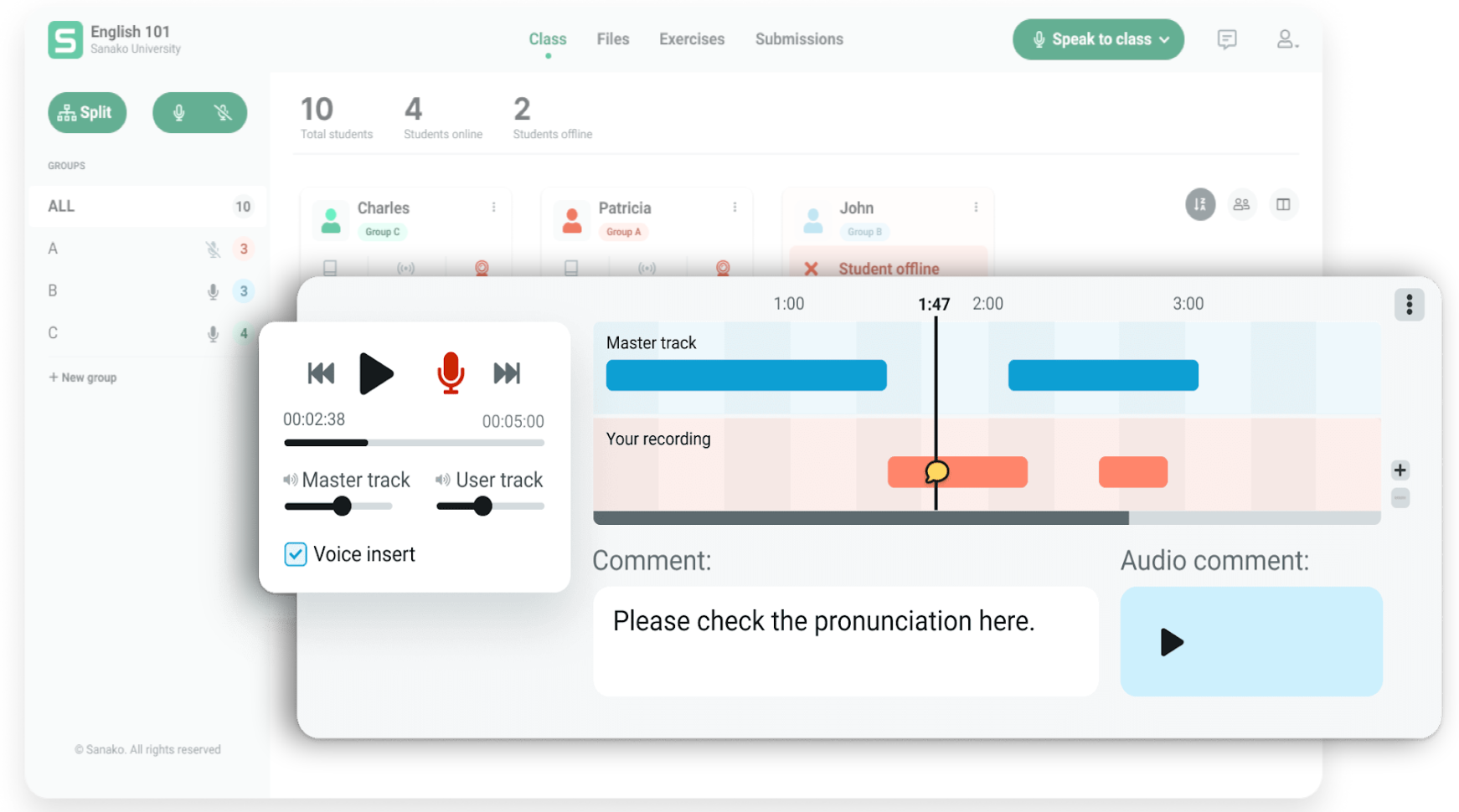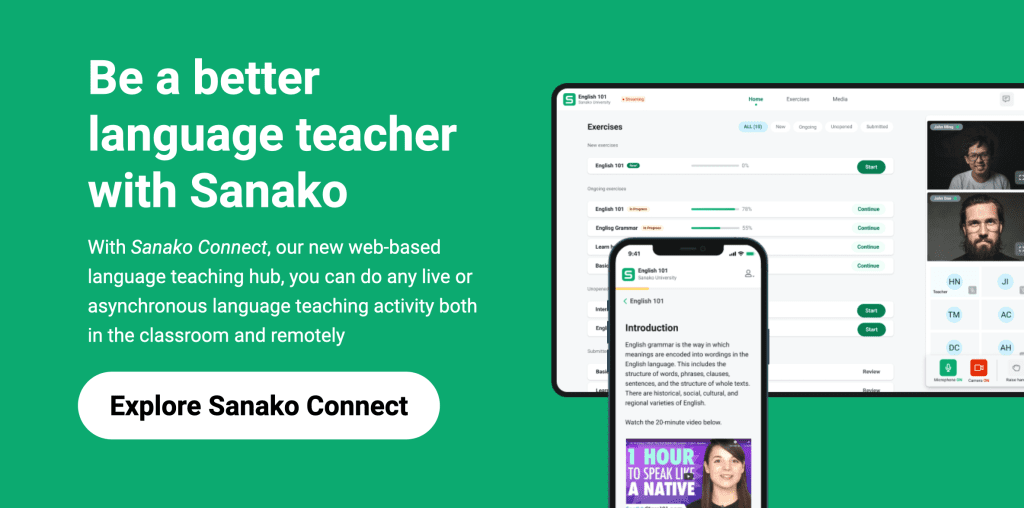Feedback is now well-established as a part of our everyday lives. After we have visited a restaurant we write a review, we’re encouraged to like and reply when we read a social media post and our chosen streaming services present recommendations on what we say we’ve enjoyed or not. Ultimately, these feedback loops are designed to make our lives better and the same is certainly true for second language learners – it’s vital that they receive good quality feedback from educators showing where further work might be needed to progress.
In fact in their widely-cited 2007 article, Hattie & Timperley described feedback as ‘one of the most powerful influences on learning.’ Of course this influence can be either positive and negative if poorly delivered, so this blog post will highlight how language educators can deliver constructive and positive feedback that engages and inspires their learners. It will focus on delivering feedback relating to students’ use of language but feedback can also address student behaviour, effort etc. We hope you find it useful!
Why is providing feedback for language learners important?
Feedback is of vital importance in helping students to develop their language skills. It can be provided by an educator or another student to help learners understand how well they are using the target language. It can provide a general indication of ability relating to key skills (listening, reading, speaking and writing) or to specifically identify areas that need further work (e.g grammar and pronunciation).
As we’ll see below, feedback should always be targeted, specific and timely and can be delivered in either spoken or written form. It should always be tailored to the learner / group of learners, their learning goals and anticipated level of proficiency. And it’s important to deliver feedback in moderation – educators should aim to provide students with information that they need to improve and not overwhelm them with too much feedback at any one time.
Lee 2017 identifies that feedback is both formative (assess learners’ progress toward learning targets during the learning process) and / or summative (provides an assessment of student performance at the end of a learning period or unit). However the most common form of feedback in language classes is certainly error correction (corrective feedback), where the objective is usually to make specific improvements to a learner’s accuracy.
Whatever form the feedback is delivered in, CUP identifies that feedback has “three fundamental and interrelated purposes.” They are:
- improving the fluency, accuracy or complexity of learners’ speaking and writing,
- motivating learners, and
- developing learner autonomy.
Students should also be encouraged to give themselves feedback. Reflective feedback is vital in getting learners to evaluate their own ability and performance. This self-assessment gives them the chance to lead their own learning and to make the changes needed to improve. For example having students to listen back their own audio recordings enables important self-evaluation.
What does good feedback look like?
Let’s now look in further detail at the three of the key elements of good feedback as identified by Allman 2019. These are that it is specific, targeted and timely.
1. Specific
Effective feedback must be specific which by definition means that it is tangible and transparent, actionable and user-friendly. The former ensures that students understand where they need to invest their time to improve and that the gains are real and relevant. Clearly the feedback must be possible for the student to actually do (actionable) and it should be relevant and appropriate for the learner’s skill set and understanding. If none of these apply, then the feedback will not be specific enough and the student will plough on regardless.
As Allman 2019 suggests the use of specific feedback also allows teachers to use “less-judgmental language” when feeding back to students. Identifying and explaining a clear error pattern and offering detailed suggestions on how to improve will, most likely, be appreciated by the student in question. Providing clear examples of where the improvement is needed is also highly supportive to this approach.
2. Targeted
Effective feedback should also be targeted, which for Allman means that it is “goal-referenced and consistent.” Goal-referenced feedback evidently means the feedback should be clearly linked to helping students achieve a learning goal or learning objective. In this regard, it is clearly essential that students are 100% clear about the requirements of the learning tasks and are clear how the educator’s feedback will help them achieve it.
The benefit of consistent feedback will be obvious to all readers, but it is worth reiterating the importance of this throughout a course or period of time. Students can be rapidly demotivated if the goalposts are seen to be constantly moving and what’s expected of them is constantly changing.
3. Timely
Finally, Allman argues that effective feedback should be timely, i.e that “it is well-timed, prompt, and ongoing.” Evidently students should receive feedback whilst learning on a particular topic is still continuing, otherwise there’s little opportunity for them to address the flaws identified. Equally, if the feedback does not follow promptly then students’ misunderstandings continue to expand and become more serious. Receiving your marks one month after taking a test does little to motivate or encourage learners to continue. Seeing and providing feedback as a series of ongoing formative assessments can also allow quicker turnaround and increased student engagement.
Sanako Connect language teaching platform allows teachers to add time-coded feedback in text or audio directly into student’s individual audio recordings. This creates an effective, targeted and timely feedback mechanism.
How can instructional technology support high-quality feedback?
One of the ways in which educators can ensure that their feedback meets the above best practice is to use instructional technology to assist the process. Not only does this help ensure that students receive their feedback quickly but it also helps to ease the significant workload which is commonly associated with providing good feedback. ACTFL also identify the following ways in which technology can play a supporting role:
- Use Google Drive to create a portfolio for each student / assessment task
- Deploy survey forms to assess progress toward learning targets and to understand how students are coping and feeling throughout the course
- Video- or audio-recording of a task to self-evaluate
- Chat functions can be invaluable for peer or co-constructed discussion
- Students can receive immediate feedback on some of their key language skills via technology solutions such as Sanako Connect
More specifically, Sanako’s market-leading language teaching tools already incorporate all of the above in the feature sets. It’s why the world’s leading educational institutions choose Sanako as their preferred supplier to support online and in-person lesson delivery. Sanako solutions enable educators to:
- Deliver a wide variety of easily adaptable templates for common language teaching activities through Sanako Connect. This includes multiple choice quizzes, text entry, or gap-fill exercises. All of which can be automatically marked by the tool as it compares student answers to those provided by the educator.
- Help demonstrate the progress students are making and simply provide feedback on areas for future development. This can be easily shared with students via Sanako Connect’s feedback functionality, which allows educators to add time-coded feedback for student’s speech and pronunciation recordings.
- Share feedback with students via Connect’s messaging functionality. Educators can give live and asynchronous feedback directly to individual students or simultaneously to the whole group via a text-based message or verbally.
- Use Connect to easily review text-based assignments. Teachers can study the work submitted by individual students or use a whole class view to see their collective performance in specific assignments. The latter enables educators to clearly identify where the class is struggling and where additional work is needed to clarify or consolidate learning.
If you’d like to find out more about how Sanako Connect could help to transform your approach to delivering high-quality feedback, please click below to learn more and to arrange your FREE demo!


